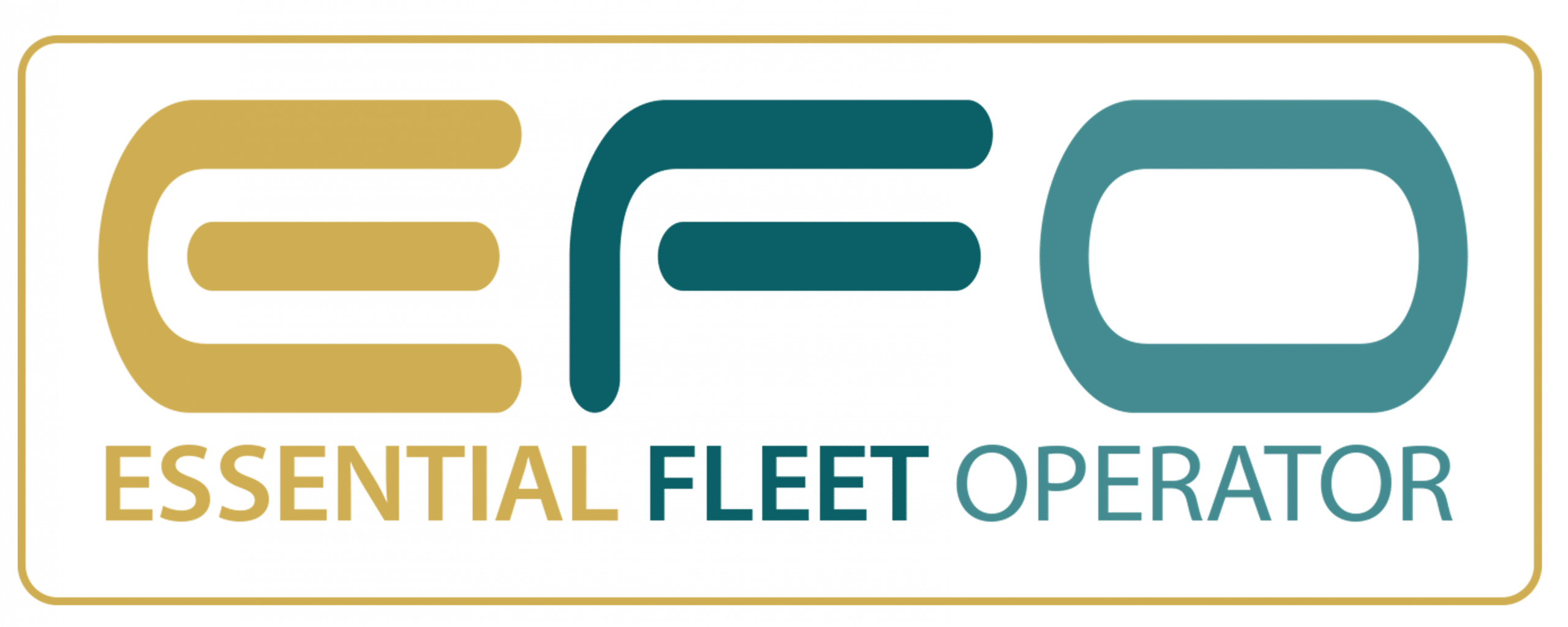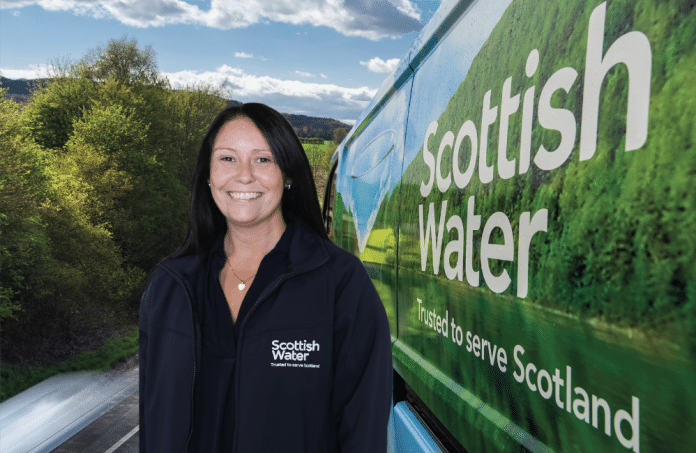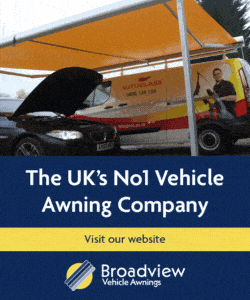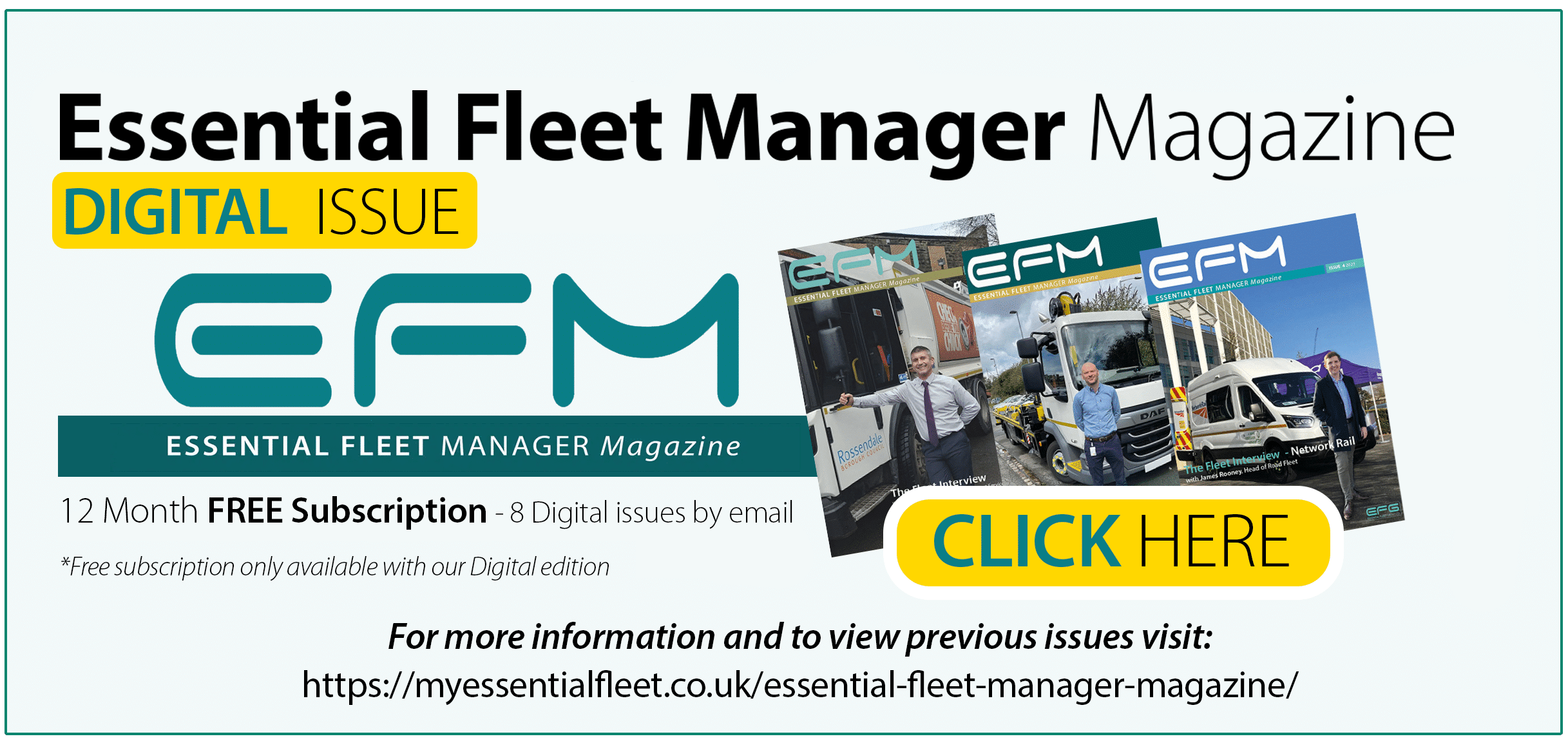with Elaine Pringle, Fleet Manager
Introduction
Accountable to the Scottish Government, Scottish Water has the responsibility of providing 1.51 billion litres of clean drinking water to around 2.62 million homes and 160,000 businesses throughout Scotland. In common with all water utility companies, Scottish Water also has the responsibility of protecting public health and the environment by collecting and treating around 1.07 billion litres of wastewater each year, before it is returned to sources.
Operating environments are diverse, ranging from the towns and cities across the Central Belt to the sparsely populated Highlands and Islands, a fact that presents significant challenges to fleet operations that are overseen by Elaine Pringle, Scottish Water’s Fleet Manager.
By nature of the diverse operating environments, fleet operations are unavoidably complex. Additionally, further challenges are being presented by a significant programme of fleet electrification and therefore Scottish Water bears not only the environmental responsibility for water provision and the treatment of waste but also of minimising the impact of all operations that support that core role.
We are therefore very grateful that we were able to catch up with Elaine, to talk about how these huge challenges are being met and to find out what the outlook for Scottish Water fleet looks like for the coming years.
Interview
Q: Could you break down your current fleet assets and how they are distributed across Scotland?
Scottish Water’s diverse commercial fleet consists of around 1,300 vans, 120 heavy goods vehicles (HGVs) and 500 items of plant, including small trailers, mini excavators and forklifts.
The majority of our commercial vehicles are specialist or have ancillary equipment fitted, such as tankers, jetting units, cranes and fridges.
We operate an electric vehicle (EV) only company car scheme, and with the introduction of our salary sacrifice scheme in 2022, we now have c.350 electric lease cars on our fleet, including 12 pool cars for grey fleet drivers to utilise.
Our fleet assets are based right across Scotland, from Dumfries and Galloway right up to the Highlands and Islands.
Q: What are the core tasks of your vehicle fleet daily?
Our operational teams rely on their vehicles to complete a variety of tasks including:
water and waste water sampling electrical and mechanical (E&M) repairs and maintenance,
sludge movement from septic tanks and waste water treatment works (WWTW) to sludge treatment centres, water and waste water operations preventative maintenance on our water and waste water network repairing bursts leakage detection facilities management… the list goes on!
Our vehicles are what I would class as ‘doing’ vehicles and the varied nature of our operations drives our need for a diverse fleet.
Q: How far along is your vehicle electrification strategy and what are the challenges that you have faced along the way?
We have set our vehicle electrification strategy: to transition to EVs when it is both economic and operationally practicable to do so.
For us, this is currently predominantly in the car and small/medium van segments of our fleet. We have started delivering on our strategy, with EV-only car schemes in place and all of our car fleet due to be fully electric before 2025. We have around 100 electric vans in the fleet, estimated to double over the next 12 months.
Although not economical at the moment, we are proactively trialling new vehicle technology in the large van and HGV segments, including taking delivery of our first battery electric vehicle (BEV) HGV, hopefully within the next 12 months too!
It will come as no surprise to many that our biggest challenges are vehicle technology (range, payload, towing capability), availability of infrastructure and repair and maintenance (R&M).
We are continually scanning the market and working with vehicle manufacturers to keep up-to-date with new vehicle technology to identify vehicles that may be up to the job!
Concerning infrastructure, we are not relying on the availability of public charging; we are installing our charging infrastructure and back office systems to meet the demand of our EV fleet.
The area we have less control over is R&M. We rely on a network of maintenance suppliers across Scotland, many of whom are not yet able to provide R&M for EVs. Although, R&M is one of our biggest challenges at the moment and not just for EVs!
Q: How do you ensure that charging infrastructure is available for your drivers and how is the cost of charging managed?
As we identify vehicles that can be transitioned to electric, we also consider the charging requirements. By using telematics data to determine vehicle utilisation and dwell times, and through engagement with drivers and operational teams, we can determine the optimal charging infrastructure required, which is a blend of home and workplace chargers. Workplace charging also allows us to effectively manage the cost of charging.
Q: What plans need to be put in place to meet your fleet EV targets and objectives and which parts of the fleet remain a challenge to transitioning?
Ah – the known unknowns! As are most, we have been targeting the low-hanging fruit, the vehicles that are doing relatively low average daily mileages and don’t require a significant amount of conversion/payload. We know that we need a plan for the parts of the fleet that are harder to electrify, our 4x4s, large vans and HGVs, but we don’t know what that plan will be yet!
Q: There have been many challenges to vehicle supply chains and they seem set to continue with current global events. How have these affected your fleet replacement plans and what has been the effect on, for example, maintenance schedules and unplanned vehicle off-road time?
This is one of our most significant challenges at the moment. I have several assets that are beyond the replacement criteria we set, which is resulting in an increase in repair and maintenance costs, vehicle downtime or vehicle off-road (VOR) which has a knock-on effect on productivity and/or drives up hire or contractor spending.
Q: What are the challenges of a large home-based fleet, combined with grey fleet, when managing risk and what level of driver training are you using to minimise that risk?
Apart from our HGVs, the majority of our commercial vehicles go home overnight for business purposes, to allow our operational teams to respond to standby events or to benefit from efficiencies of direct-to-site working practices.
To manage our operational road risk, we undertake many driver safety activities, including driver induction and training, scheduled or planned vehicle audits, unannounced gate checks and post-incident investigations.
We complete driving licence checks for all our drivers and our grey fleet drivers, this includes vehicle checks.
Q: With the home-based vehicles in mind, how do you manage SMR schedules and therefore maximise efficiency and minimise vehicle downtime?
All our commercial vehicle drivers complete pre-use vehicle checks using a mobile phone App. The driver records any defects on the App and in the vehicle defect book and then calls our internal Fleet Maintenance team who arrange repair via our network of maintenance suppliers.
Scheduled maintenance is planned and communicated to our operational teams in a forward maintenance planner.
We have built a strong network of garages and suppliers across Scotland and aim to service our assets locally where possible to minimise vehicle downtime.
Q: How do you utilise technology and other services to assist in managing vehicle and driver risk and efficiency?
Technology certainly makes fleet teams’ lives a lot easier! We use several systems including fleet management software, telematics, digital tachographs and tachograph analysis software, driver licence checking and vehicle pre-use check Apps. It would make our lives EVEN easier if we had one system that did it all!
Recently, after a two-year trial, we have partnered with Michelin Connected Fleet, both to support driver safety and also to help the business meet our ambitious target of transitioning to a zero-emission fleet.
We take a risk-based approach to driving licence checks. The frequency of checks is dependent on the type of vehicle being driven. With more than 4,000 drivers, it is a significant undertaking for Scottish Water to check driving licences to ensure that everyone driving for business purposes holds a valid licence for the category of vehicle they are driving. From that perspective, the DriverCheck service works well for us. It provides automated, reliable driving licence checking, continually and silently in the background, highlighting any issues.
Q: How important is regular engagement with suppliers, to ensure that objectives can be met and that expectations are practical and realistic?
Building and maintaining relationships is key. Regular engagement with suppliers is essential to keep up to date with new products and services, particularly new vehicle technology.
With the challenges we are facing in terms of new asset delivery and repair and maintenance, it is so important to have regular communication to ensure estimated delivery/completion dates are realistic and to help us plan for the worst, to maintain service for our customers.
Q: The Government is responsible for setting out targets and objectives in many areas of fleet management. How much does it assist in meeting those targets and is there more that can be done?
Government targets and objectives influence strategy and policy decisions. For Scottish Water, the Scottish Government’s Programme for Scotland targets for public sector fleets heavily influenced our fleet decarbonisation strategy and our internal targets.
There are still areas for improvement required in the speed of zero-emission vehicle technology, particularly for utility/ HGVs, and for EV R&M networks. I would like to see Government targets, objectives and support in these areas.
Q: How do you think you will be able to best describe your fleet operation by 2028? What will have been the key, positive changes?
By 2028, our fleet operation should be well on its way to a large-scale transition to a zero-emission fleet. For that to happen, the key changes need to be around vehicle technology and infrastructure advances.


As featured in Issue 2 of Essential Fleet Manager – click here to view




